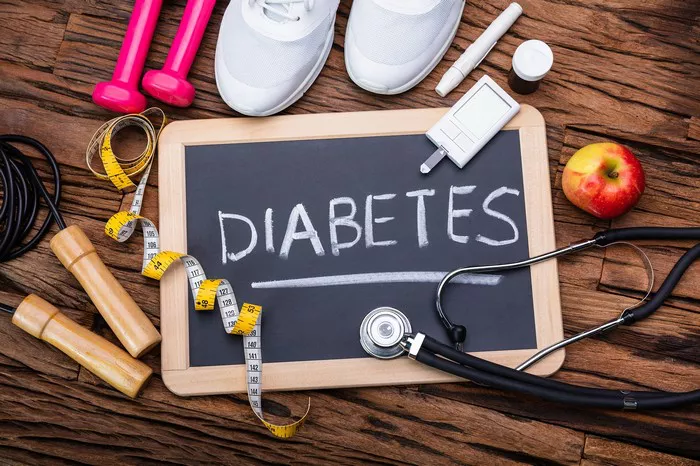Prediabetes is a crucial health condition that signals an increased risk of developing type 2 diabetes, heart disease, and stroke. Understanding the what the A1C test measures is vital for timely intervention and effective management. This article will delve into , the implications of various A1C levels, and the importance of lifestyle changes to prevent the progression of prediabetes to type 2 diabetes.
Understanding A1C: What Is It?
The A1C test, also known as glycated hemoglobin, hemoglobin A1C, or HbA1c, measures the average blood glucose levels over the past two to three months. Hemoglobin is a protein in red blood cells that carries oxygen. When glucose enters the bloodstream, it binds to hemoglobin, forming glycated hemoglobin. The A1C test reports the percentage of hemoglobin that is glycated, providing a long-term view of blood sugar levels.
How Is A1C Tested?
The A1C test is a simple blood test that can be performed in a healthcare provider’s office or a laboratory. It does not require fasting and can be done at any time of the day. The results are given as a percentage, indicating the proportion of glycated hemoglobin in the blood. For example, an A1C of 5.7% means that 5.7% of hemoglobin is glycated.
A1C Levels and Their Implications
The American Diabetes Association (ADA) defines the following A1C ranges:
Normal: A1C less than 5.7%
Prediabetes: A1C between 5.7% and 6.4%
Diabetes: A1C of 6.5% or higher
These categories help healthcare providers assess an individual’s risk for developing diabetes and formulate an appropriate management plan.
A1C and Prediabetes
Prediabetes is characterized by an A1C level between 5.7% and 6.4%. This condition serves as an important warning sign that an individual’s blood sugar levels are higher than normal but not high enough to be classified as diabetes.
What Does an A1C Level of 5.7% to 6.4% Indicate?
When a patient’s A1C falls within this range, it suggests that:
- The body is beginning to resist insulin, a hormone that helps regulate blood sugar levels.
- Blood sugar levels are elevated, indicating that the body may not be processing glucose effectively.
- There is a higher risk of developing type 2 diabetes if no lifestyle changes are made.
It’s essential to understand that an A1C of 5.7% to 6.4% does not guarantee that diabetes will develop. However, it is a significant marker that warrants attention and proactive measures.
Risk Factors for Prediabetes
Several factors can increase the risk of developing prediabetes. Understanding these risk factors is crucial for early detection and intervention:
1. Obesity
Being overweight, particularly with excess fat around the abdomen, is one of the strongest risk factors for prediabetes. Body fat can affect how the body uses insulin, leading to insulin resistance.
2. Age
The risk of developing prediabetes increases with age. Individuals over the age of 45 are at a higher risk. However, prediabetes can also occur in younger adults, especially if they have other risk factors.
3. Family History
A family history of diabetes increases the likelihood of developing prediabetes. Genetic factors can play a significant role in insulin resistance.
4. Sedentary Lifestyle
Physical inactivity contributes to weight gain and increases the risk of insulin resistance. Regular physical activity helps maintain a healthy weight and improves insulin sensitivity.
5. Ethnicity
Certain ethnic groups, including African Americans, Hispanic Americans, Native Americans, and some Asian Americans, have a higher risk of developing prediabetes.
6. Gestational Diabetes
Women who had gestational diabetes during pregnancy are at a higher risk of developing prediabetes and type 2 diabetes later in life.
7. Polycystic Ovary Syndrome (PCOS)
PCOS is a hormonal disorder that can increase insulin resistance, contributing to a higher risk of prediabetes.
8. High Blood Pressure and Cholesterol Levels
Individuals with hypertension or abnormal cholesterol levels are more likely to develop prediabetes due to the association with metabolic syndrome.
Recognizing Symptoms of Prediabetes
Prediabetes often does not present noticeable symptoms, which is why routine screening is important. However, some individuals may experience signs that could indicate insulin resistance, including:
- Increased thirst
- Frequent urination
- Fatigue
- Blurred vision
- Dark patches of skin (acanthosis nigricans)
If you notice any of these symptoms, it’s essential to consult a healthcare provider for further evaluation and testing.
The Role of A1C in Diabetes Management
1. Monitoring Progress
For individuals diagnosed with prediabetes, regular A1C testing can help monitor progress and the effectiveness of lifestyle changes. The ADA recommends testing A1C levels every 3 to 6 months for those with prediabetes.
2. Setting Goals
Healthcare providers can use A1C levels to set realistic goals for patients. Achieving and maintaining an A1C level below 5.7% can significantly reduce the risk of developing type 2 diabetes.
3. Evaluating Treatment Options
For individuals diagnosed with prediabetes, lifestyle changes such as improved diet and increased physical activity are the first line of defense. In some cases, healthcare providers may recommend medications to help manage blood sugar levels.
4. Preventing Progression to Diabetes
The main goal for individuals with prediabetes is to prevent the progression to type 2 diabetes. Research has shown that lifestyle changes can reduce the risk of diabetes by up to 58% in high-risk individuals.
Lifestyle Changes to Manage Prediabetes
1. Healthy Eating
Adopting a balanced, nutritious diet is critical for managing blood sugar levels and preventing diabetes. Key components include:
Focusing on whole foods: Choose whole grains, lean proteins, healthy fats, and plenty of fruits and vegetables.
Controlling portion sizes: Understanding serving sizes can help prevent overeating and maintain healthy weight.
Reducing added sugars: Limiting foods and drinks high in added sugars can help manage blood sugar levels.
2. Regular Physical Activity
Engaging in regular exercise can improve insulin sensitivity and aid in weight management. Aim for at least 150 minutes of moderate-intensity aerobic activity per week, along with strength training exercises on two or more days.
3. Weight Management
Losing even a small percentage of body weight (5-7% of total body weight) can significantly reduce the risk of developing type 2 diabetes. A combination of healthy eating and physical activity is key to achieving and maintaining a healthy weight.
4. Regular Monitoring
Regularly checking blood sugar levels and A1C can help individuals stay informed about their health and make necessary adjustments to their diet and lifestyle.
5. Managing Stress
Chronic stress can negatively impact blood sugar levels. Finding healthy ways to manage stress, such as meditation, yoga, or engaging in hobbies, can be beneficial for overall health.
6. Sleep Hygiene
Quality sleep is essential for maintaining blood sugar levels. Aim for 7-9 hours of restful sleep each night to support metabolic health and overall well-being.
The Importance of Regular Check-ups
Routine health check-ups are essential for monitoring overall health, especially for individuals with prediabetes. Regular consultations with a healthcare provider can help assess risk factors, evaluate blood sugar levels, and make necessary adjustments to the management plan.
1. Routine Blood Tests
In addition to the A1C test, other blood tests may be conducted to monitor glucose levels, cholesterol, and overall metabolic health.
2. Education and Support
Education about prediabetes, diabetes, and healthy lifestyle choices is crucial for empowering individuals to take charge of their health. Support groups and diabetes education programs can provide valuable resources and motivation.
3. Partnering with Healthcare Providers
Collaboration with healthcare providers, including doctors, dietitians, and diabetes educators, can help individuals with prediabetes receive comprehensive care tailored to their needs.
Conclusion
An A1C level between 5.7% and 6.4% serves as an important indicator of prediabetes and the potential risk for developing type 2 diabetes. Understanding the significance of this measurement, along with lifestyle changes and regular monitoring, can empower individuals to take proactive steps toward improving their health.
Managing prediabetes is achievable through healthy eating, regular physical activity, and ongoing support from healthcare professionals. By making informed choices, individuals can lower their A1C levels, reduce the risk of diabetes, and enhance their overall well-being. Regular check-ups and blood glucose monitoring are essential components of this journey, allowing individuals to track their progress and make necessary adjustments to their lifestyle.
By focusing on preventive measures and understanding the implications of A1C levels, individuals with prediabetes can significantly impact their health and quality of life.
Related topics:
What Level of A1C Indicates Diabetes?



























